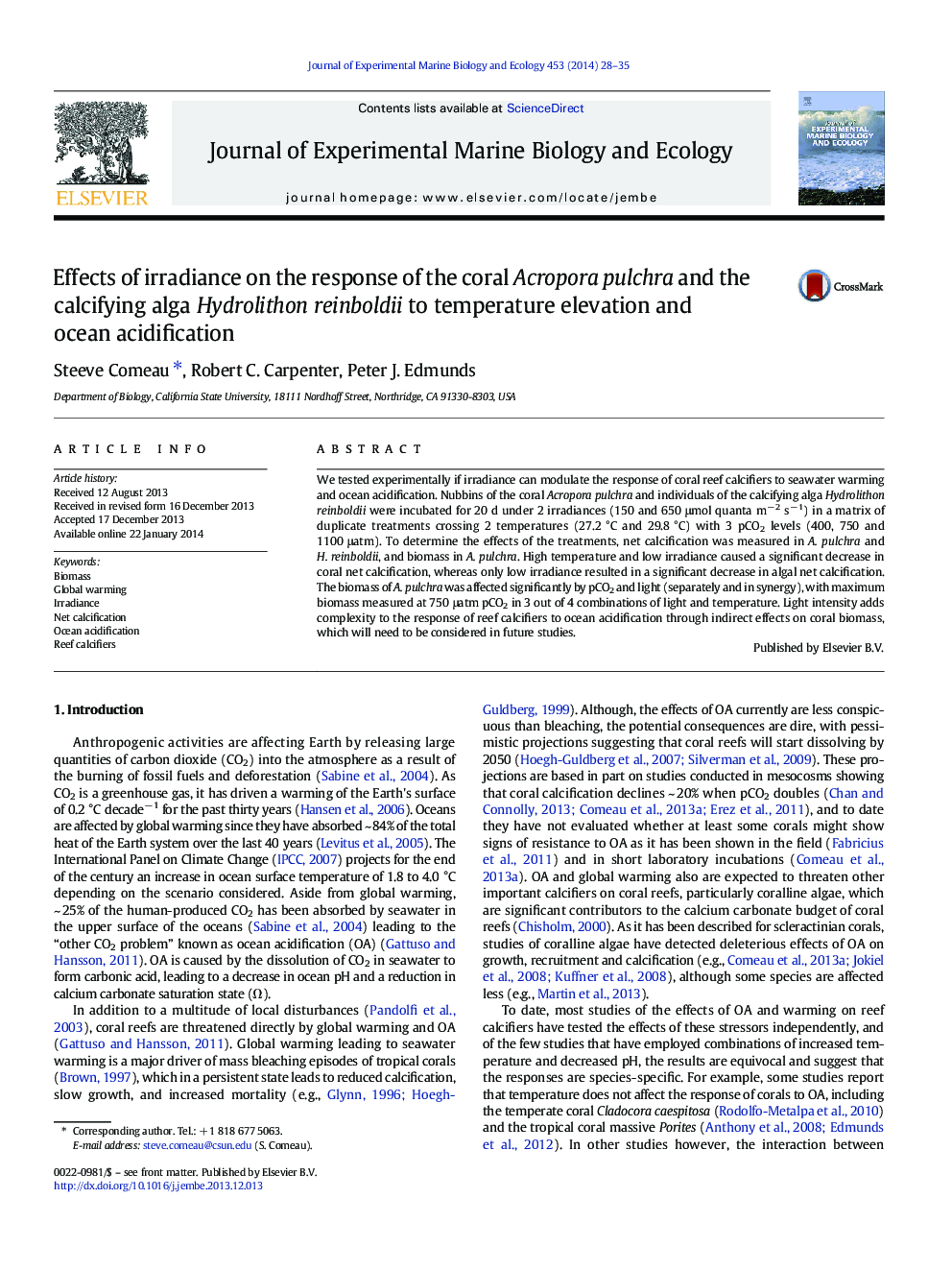| Article ID | Journal | Published Year | Pages | File Type |
|---|---|---|---|---|
| 4395571 | Journal of Experimental Marine Biology and Ecology | 2014 | 8 Pages |
•Corals and algae were grown under combined light, pCO2 and temperature treatments.•High temperature and low irradiance caused a decrease in coral calcification.•Only low irradiance caused a significant decrease in algae calcification.•The combined effects of light and pCO2 affected biomass of corals.•In corals, light drove the allocation of resources toward calcification or biomass.
We tested experimentally if irradiance can modulate the response of coral reef calcifiers to seawater warming and ocean acidification. Nubbins of the coral Acropora pulchra and individuals of the calcifying alga Hydrolithon reinboldii were incubated for 20 d under 2 irradiances (150 and 650 μmol quanta m− 2 s− 1) in a matrix of duplicate treatments crossing 2 temperatures (27.2 °C and 29.8 °C) with 3 pCO2 levels (400, 750 and 1100 μatm). To determine the effects of the treatments, net calcification was measured in A. pulchra and H. reinboldii, and biomass in A. pulchra. High temperature and low irradiance caused a significant decrease in coral net calcification, whereas only low irradiance resulted in a significant decrease in algal net calcification. The biomass of A. pulchra was affected significantly by pCO2 and light (separately and in synergy), with maximum biomass measured at 750 μatm pCO2 in 3 out of 4 combinations of light and temperature. Light intensity adds complexity to the response of reef calcifiers to ocean acidification through indirect effects on coral biomass, which will need to be considered in future studies.
